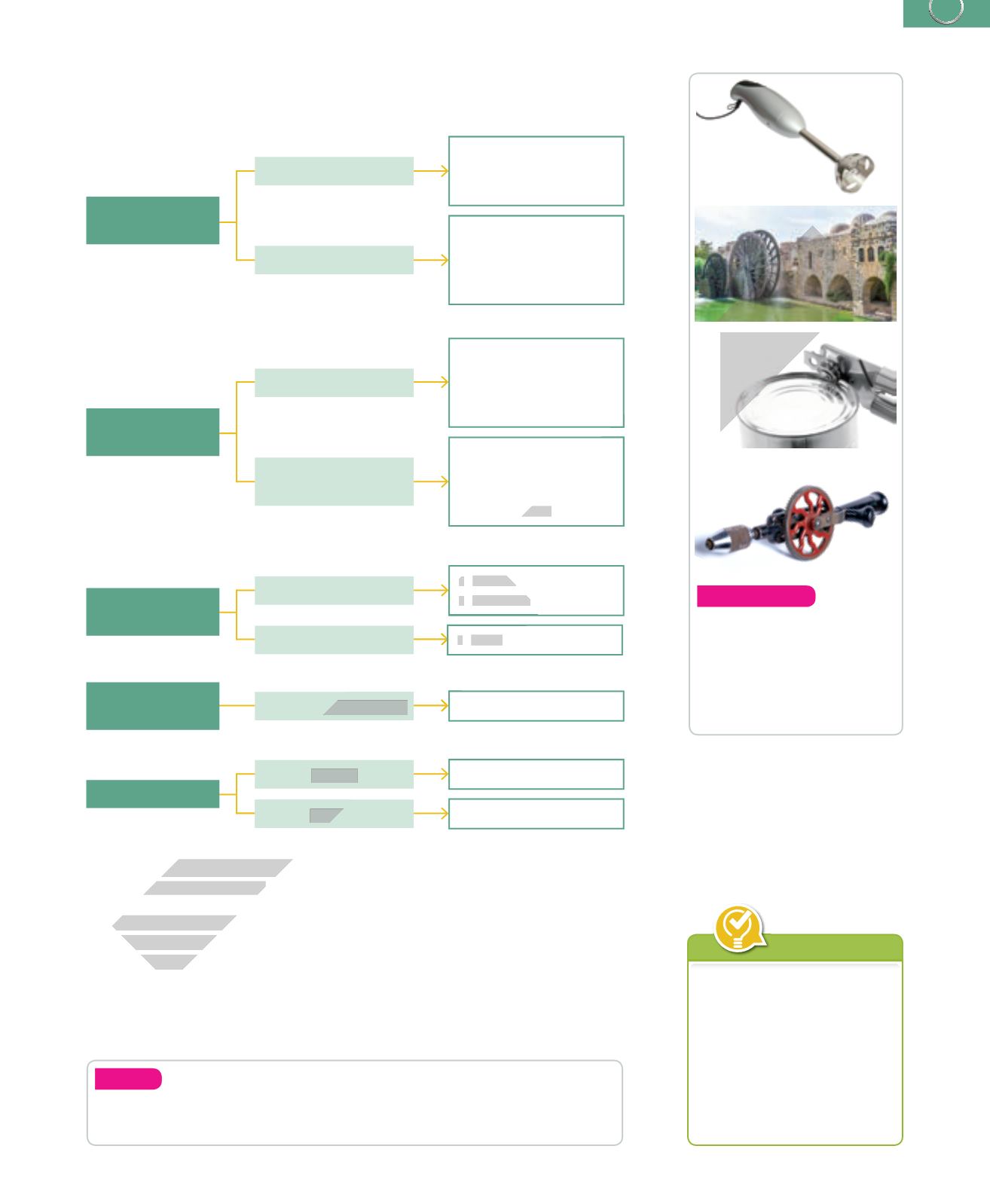
103
5. Mechanisms
www
❚
Mechanisms transfer and
transform force and motion
from an input source to an
output receptor.
❚
Mechanisms can be classified
by function: transmitting
motion, transforming motion,
controlling motion, accumulating
energyormakingconnections.
Key concepts
Understand
4.
Look at the photos. What
work do the mechanisms
do? What provides the
input of force andmotion?
What are the output
receptors?
1.2.
Classification of mechanisms
We can classify mechanisms by the work that they do and how they function.
Apply
5.
In your notebook, make simple drawings of the mechanisms in the chart
above. Use books or the Internet to help you.
Transmission of
motion
Linear transmission
❚❚
Lever
❚❚
Pulley
❚❚
Block and tackle
Rotary transmission
❚❚
Friction wheels
❚❚
Belt drive
❚❚
Gears
❚❚
Chain drive
Transformation
of motion
Rotary-linear
❚❚
Wheel
❚❚
Rack and pinion
❚❚
Nut and bolt
❚❚
Crank
Reciprocating
rotary-linear
❚❚
Crank and rod
❚❚
Crankshaft
❚❚
Cam
❚❚
Eccentric cam
Energy
accumulation
Absorption / Dissipation
❚❚
Spring
Connection
Linkage
❚❚
Clutch
Support
❚❚
Plain bearing
Motion
control
Direction control
❚❚
Ratchet
❚❚
Freewheel
Speed reduction
❚❚
Brake
1.3.
Conservation of energy and work
in mechanisms
Mechanisms seem to increase force, but they can’t create energy on their own. All
mechanisms produce the same amount of work that is done to them, including
energy that is lost to friction
7
and heat.
If a mechanism increases force, it must decrease motion. Similarly, if a mechanism
increases motion, it must decrease force. In this way, energy and work are
conserved.
7
friction
:
the action of one object or
material moving against another
ADVANCE EDITION


